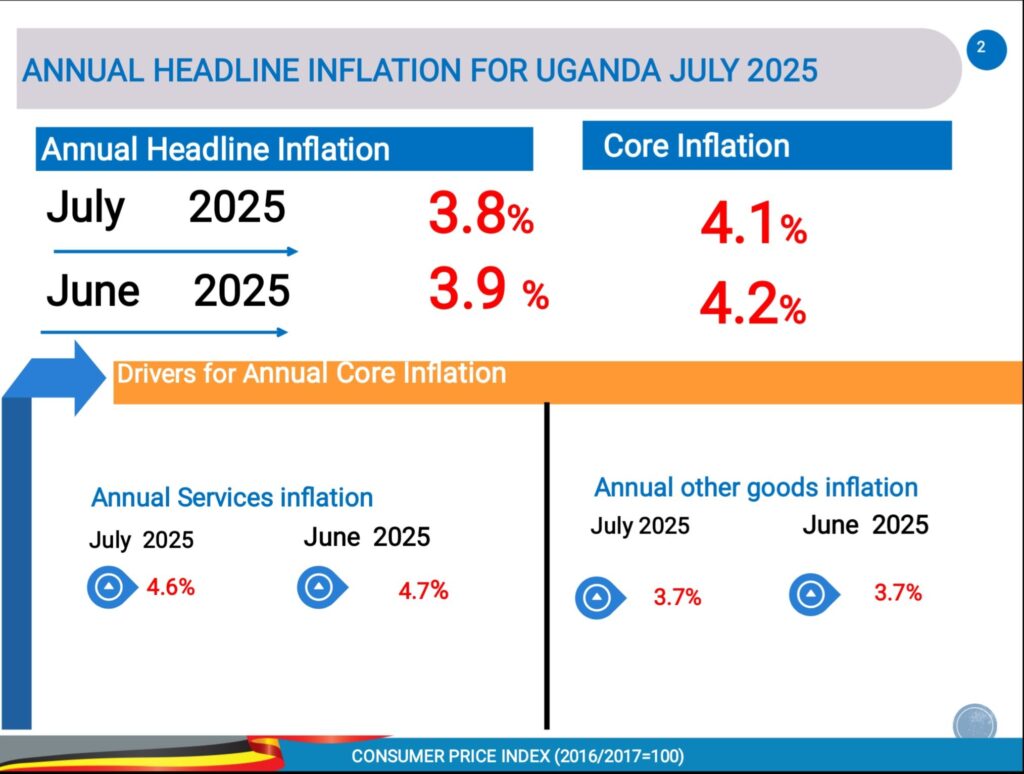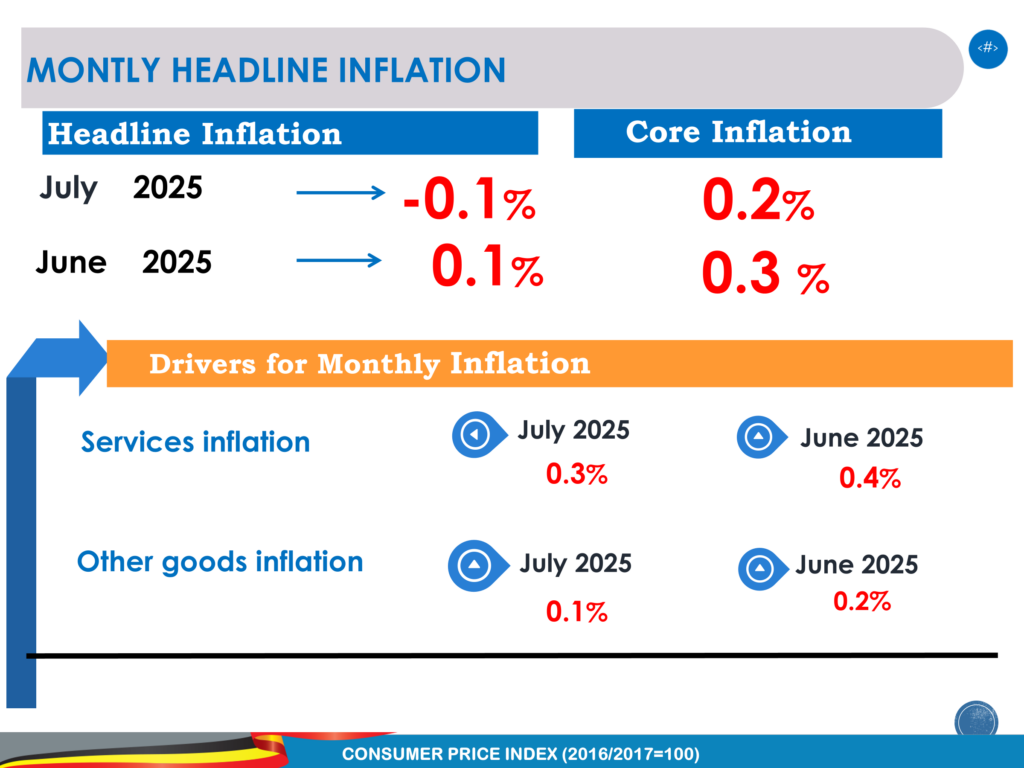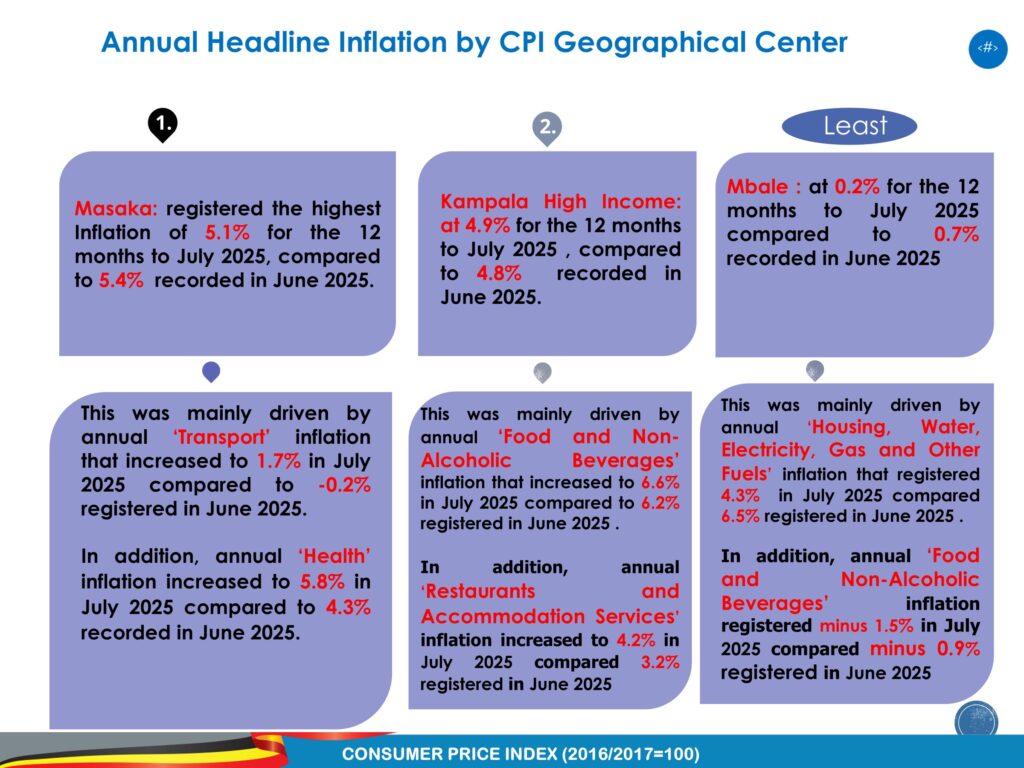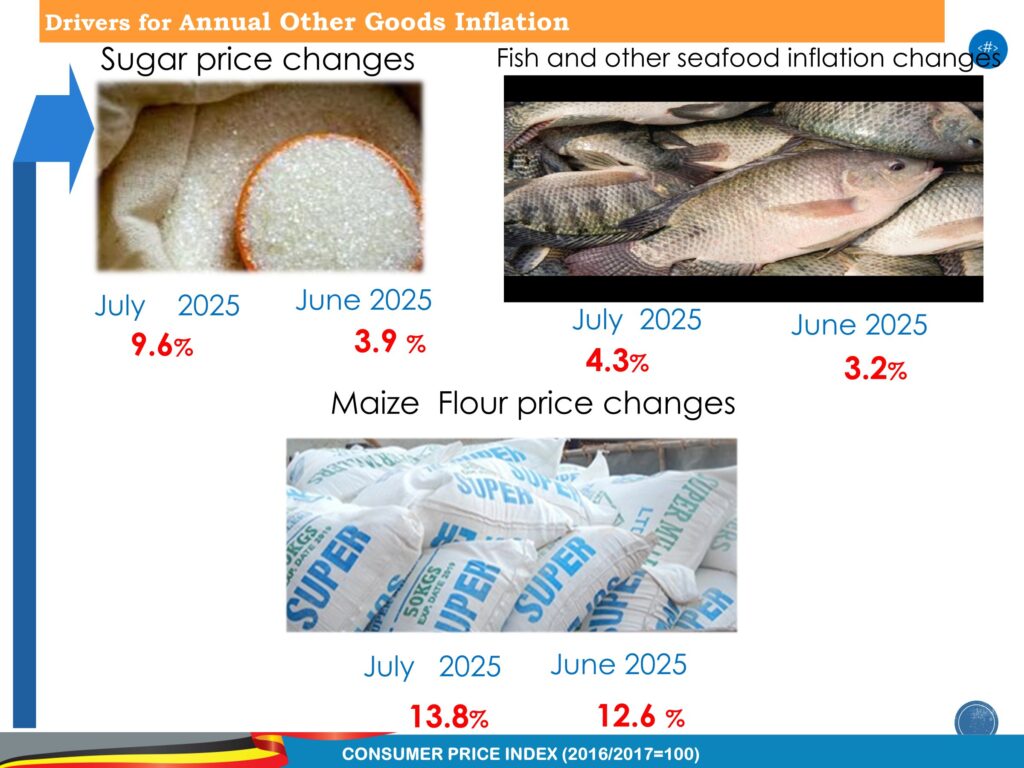Uganda’s annual headline inflation slowed slightly to 3.8% in July 2025, down from 3.9% in June, according to the latest Consumer Price Index (CPI) figures released by the Uganda Bureau of Statistics (UBOS).
Core inflation—which excludes volatile items like food and energy—also dropped marginally to 4.1% from 4.2% the previous month, signaling moderate price pressure across most sectors.

Energy Prices Dip, Charcoal and Water Charges Rise
The Energy, Fuel and Utilities (EFU) category showed a mixed performance. While prices of electricity and liquid energy fuels dropped, the cost of charcoal and water charges increased, driving localized inflation spikes in some regions.
Monthly Inflation Turns Negative
On a month-to-month basis, headline inflation in July registered a slight decline of -0.1%, suggesting a modest drop in the general price level. However, core inflation on a monthly basis edged up by 0.2%.

Food price movements were mixed: sugar saw a price decline, while staples such as groundnuts, maize grain, and Nile perch became more expensive.
Regional Breakdown: Masaka Tops Inflation Chart
Among Uganda’s major regions, Masaka recorded the highest annual inflation rate at 5.1%, though this was a slight decrease from 5.4% in June. Kampala’s high-income areas followed closely at 4.9%, up from 4.8% previously.

On the other hand, Mbale experienced the lowest annual inflation rate at just 0.2%, down from 0.7% in June.
Winners and Losers: What Got Cheaper, What Didn’t
Prices of sugar, fish, and posho recorded annual increases, contributing to the overall inflation. Conversely, notable annual price declines were observed for tomatoes, beans, matooke, Irish potatoes, fresh leafy vegetables, and onions.

The data indicates a gradual easing of inflationary pressures despite volatility in key consumer categories. UBOS will continue monitoring trends as Uganda heads into the last quarter of the calendar year.









